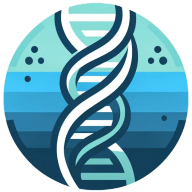Welcome to our deep dive into the most recent advancements in CRISPR technology. This revolutionary gene-editing tool has been making waves in the scientific community, promising to transform the way we approach genetic diseases and bioengineering. In this comprehensive blog post, we'll explore the latest updates, breakthroughs, and potential applications of this groundbreaking technology.
Understanding the Basics of CRISPR
CRISPR, short for Clustered Regularly Interspaced Short Palindromic Repeats, is a gene-editing technology that has revolutionized the field of genetics. It allows scientists to make precise, targeted changes to the DNA of living organisms, including humans. The technology is based on a natural defense mechanism found in bacteria, which uses CRISPR sequences to cut out and destroy the DNA of invading viruses.
The potential applications of CRISPR are vast, ranging from treating genetic diseases to improving crop yields. However, the technology is still in its early stages, and many challenges and ethical questions remain. Despite these hurdles, the pace of progress in CRISPR research is rapid, with new developments and breakthroughs emerging regularly.
Recent Advances in CRISPR Technology
Over the past few years, there have been several significant advancements in CRISPR technology. One of the most notable is the development of a new version of the technology, known as CRISPR-Cas9. This version is more precise and efficient than previous versions, making it a powerful tool for genetic engineering.
Another major development is the use of CRISPR to treat genetic diseases in humans. In 2020, scientists successfully used CRISPR to treat a patient with sickle cell disease, marking the first time the technology has been used to cure a genetic disease in a living person. This breakthrough has opened the door to the possibility of using CRISPR to treat other genetic diseases in the future.
The Future of CRISPR: Potential Applications and Challenges
The potential applications of CRISPR are vast and exciting. In medicine, the technology could be used to treat a wide range of genetic diseases, from cystic fibrosis to Huntington's disease. In agriculture, CRISPR could be used to engineer crops that are more resistant to pests and diseases, potentially increasing food production and reducing the use of harmful pesticides.
However, there are also significant challenges and ethical questions associated with the use of CRISPR. One of the biggest concerns is the potential for unintended consequences, such as off-target effects where the wrong part of the DNA is edited. There are also ethical concerns about the use of CRISPR to make permanent changes to the human genome, particularly in the case of germline editing, which involves making changes that can be passed on to future generations.
Ethical Considerations Surrounding CRISPR
As with any powerful technology, CRISPR raises a number of ethical questions. The most pressing of these concerns the potential for misuse. While the technology has the potential to cure genetic diseases, it could also be used for less noble purposes, such as creating "designer babies" with specific traits.
There are also concerns about the potential for unintended consequences. While CRISPR is a precise tool, it is not perfect, and off-target effects can occur. These unintended changes to the genome could have unpredictable and potentially harmful effects.
Despite these concerns, many scientists believe that the benefits of CRISPR outweigh the risks. They argue that with proper regulation and oversight, the technology can be used responsibly to bring about significant benefits for humanity.
Regulatory Landscape for CRISPR
Given the potential risks and benefits of CRISPR, there is a pressing need for regulation. Currently, the regulatory landscape for CRISPR is a patchwork of different rules and guidelines, varying from country to country.
In the United States, the Food and Drug Administration (FDA) regulates the use of CRISPR in human medicine, while the Department of Agriculture oversees its use in crops. In Europe, the European Medicines Agency regulates the use of CRISPR in medicine, while the European Food Safety Authority oversees its use in agriculture.
While these regulatory bodies have made efforts to keep up with the rapid pace of CRISPR research, many experts believe that more needs to be done to ensure the safe and responsible use of the technology.
The Road Ahead for CRISPR
Looking ahead, the future of CRISPR is bright. The technology is still in its early stages, and there is much more to learn and discover. However, the progress made so far is promising, and the potential applications of CRISPR are vast.
In the coming years, we can expect to see more advancements in CRISPR technology, as well as more applications in medicine, agriculture, and other fields. However, as the technology continues to advance, it will be crucial to address the ethical and regulatory challenges that come with it.
Wrapping Up: The Future is Bright for CRISPR
As we've explored in this blog post, CRISPR technology is a powerful tool with the potential to revolutionize many fields. From curing genetic diseases to improving crop yields, the possibilities are vast. However, with great power comes great responsibility, and it will be crucial to navigate the ethical and regulatory challenges that come with this technology. As we look to the future, one thing is clear: the story of CRISPR is just beginning, and we can expect many more exciting developments in the years to come.

